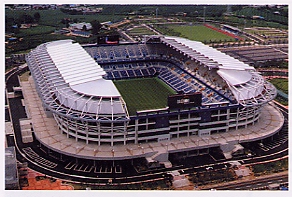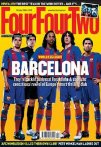 |
| Posters | Videos | CD-ROMS | Games | Soccer Mags | Books | Products! |
 |
| DAEJEON |
| Korea's Science and Technology
Showcase |
Daejeon leaped into the international spotlight in 1993, when the city successfully hosted the International Expo. Since then, Daejeon has been Korea's undisputed technology capital. The Daejeon Expo site now serves as public and private sector educational and research facilities.
Daejeon lies almost at the exact centre of Korea and has historically been one of the country's main transportation hubs where railways, roads, and expressways all merge. Archaeological evidence suggests that there has been a settlement at Daejeon since Palaeolithic times, when settlers were no doubt attracted by the area's low hills, wide plains and abundant streams and rivers. Certainly the area was an important strategic centre around the first century AD, when the neighbouring cities of Gongju and Buyeo were capitals of the ancient Baekje Kingdom.
Daejeon has risen to become a dynamic and prosperous urban centre, the second administrative capital next to Seoul.
The Daedeok Science Town acts as an incubator for cutting-edge technology and venture companies. It is also an educational and cultural park, housing the National Science Museum, the Korea Institute of Science and Technology and the Science and Culture Center.
Daejeon has several interesting tourist destinations, including culture-rich Buyeo and Gongju, and Mt. Gyeryong National Park, all of which belong to the Baekje (18 BC - AD 660) Culture Zone. Gongju was an early capital of the ancient kingdom, then Buyeo around the sixth century. The two cities remain popular destinations for visitors wishing to soak up some of Korea's fascinating cultural history.
Daejeon is also known for the quality of its hot springs. The Yuseong Thermal Spring is a particularly popular resort for domestic and international travellers. The hot mineral water contains calcium, radium, sulphates and carbonates, and is believed by many to be especially good for skin diseases and neuralgia.
Information
Web site: http://worldcup.metro.daejeon.kr (Korean, English)
Tel: 82-42-600-5204
Fax: 82-42-600-2449
| DAEJEON WORLD CUP STADIUM |
 |
| Simple and refined, the Daejon Stadium was designed to welcome spectators
with the warmth found in the traditional courtyards of Korean homes. |
| Key Facts Name: Daejeon World Cup Stadium Type: Football Only Opened: September 13 2001 Cost: W121.7 billion Total Capacity: 41,024 Spectator seats: Under cover: 33,897 Open: 7,113 VIP seats: 584 VIP Boxes: 20 ( 234 seats) Disabled seats: 274 |
| Pitch Size: 116m x 79m Spectator Parking: 1,753 Distances to Stadium From city centre: 7 km From Cheongju Airport: 45 km From railway station: 9 km From bus terminal: 10 km Press Facilities Press seats: 597 Seats with desk and telephone: 597 Space for commentators: 597 Space for photographers: 98 |
Source: FIFA
 |
 |
 |
 |
 |
 |
| Videos | New Posters | CALENDARS | Books | Magazines |
| VISIT THE WORLD'S LEADING SOCCER MAGAZINE |
| Posters | Videos | Books | Games | Mags | New Products |
| MAIN LINKS** CLUBS (Intl.) COUNTRIES PLAYERS WOMEN YOUTH COLLEGE HIGH SCHOOL SOCCERMALL |
 |
|